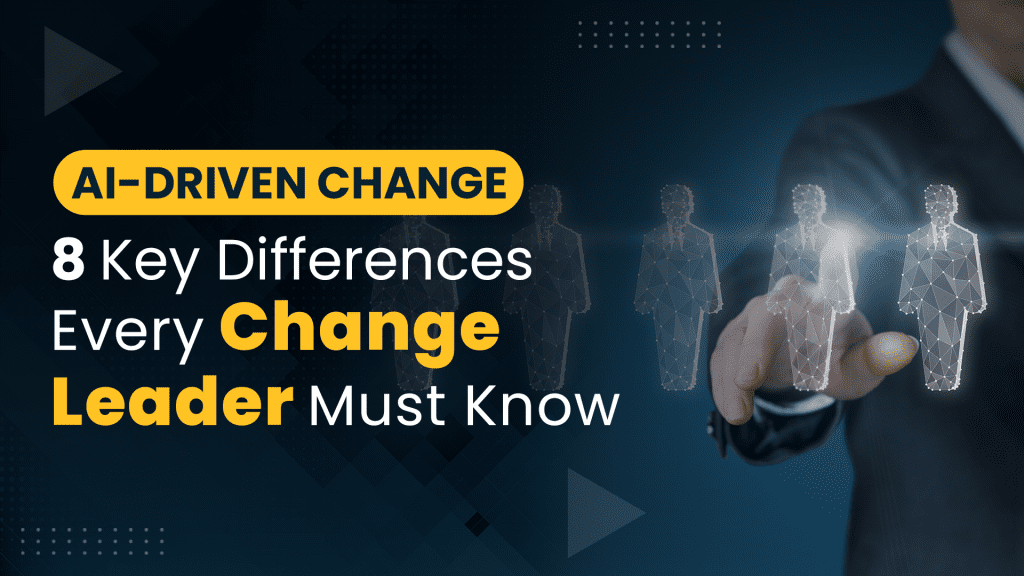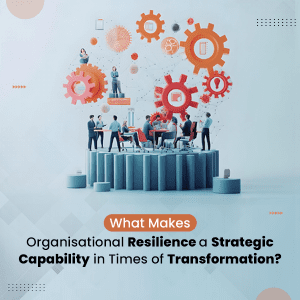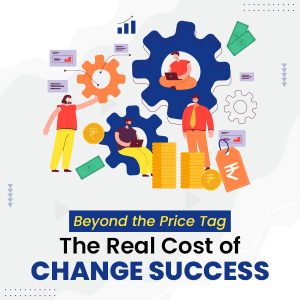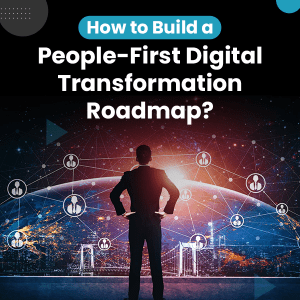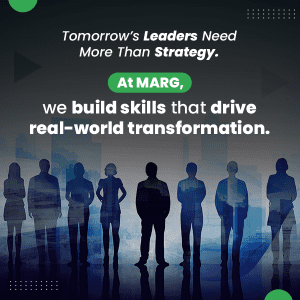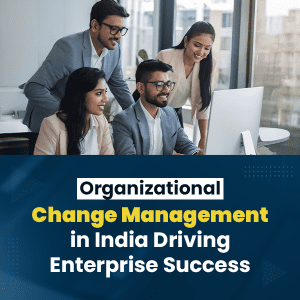The New Reality of Change Leadership
Artificial Intelligence (AI) isn’t just another tech initiative – it’s a fundamental shift in how work gets done, how decisions are made, and how people experience change.
As organizations race to adopt AI tools and platforms, many are discovering that traditional change management approaches no longer suffice. AI-driven transformations introduce new dynamics: constant evolution, ambiguous outcomes, data risks, and deep personal resistance. Leading this type of change requires a new mindset – one rooted in adaptability, ethics, and empathy.
This blog explores 8 key ways AI-driven change differs from traditional change – backed by global research and practitioner insights.
Organizations Investing in AI Need More Than Just Tech
Many organizations are investing millions in AI technology – yet fail to realize returns. The problem? They apply traditional change management strategies to a fundamentally different transformation.
Recent Prosci research (with 1,107 participants across functions) reveals:
· 38% of AI implementation challenges are human-centric: learning curve (22%), prompt engineering (11%), inadequate training (6%)
· Only 16% of the challenges are technical
· A wide trust gap exists – executives show +1.09 trust, while frontline workers show +0.33
· Leadership support is critical – smooth adopters show +1.65, while struggling ones drop to -1.50
These numbers make it clear: AI change is different – and demands a new approach.
8 Ways AI-Driven Change is Fundamentally Different
1. The “Never-Ending Phase 2” Problem
AI evolves constantly. Traditional change management assumes an end-state. But AI? It demands continuous readiness. Plans must be modular; sponsors must remain visible and change leadership must stay active.
2. Security Becomes Central
AI introduces new data risks – especially in industries like finance, healthcare, and legal. Awareness, training, and adoption must integrate risk management and data governance from the start.
3. Ethics and Bias in the Spotlight
Ethical concerns dominate AI adoption. Change leaders must reinforce ethical use of AI, create open feedback channels, and model responsible behavior from the top down.
4. Shift to Individualized Learning
Different roles use AI differently. One-size-fits-all training fails. Instead, offer role-specific learning journeys, peer learning, and flexible resources.
5. Scale and Complexity Require Enterprise Thinking
AI impacts entire ecosystems. It’s not a tech change – it’s a business transformation. Stakeholder mapping, cross-functional leadership, and enterprise-wide change management become critical.
6. Future States Are Unclear
With AI, there’s no “finished” state. Change leaders must help teams navigate ambiguity, communicate with clarity, and align progress markers instead of static goals.
7. Resistance Takes New Forms
Fear of irrelevance and job displacement creates deeper resistance. Managing this means going beyond traditional tactics – focusing on empathy, emotional response, and trust.
8. Work Dynamics Are Being Redefined
AI redefines roles and the skills needed to succeed. Change management must support this work redesign and help people see AI as a partner – not a threat.
What Makes AI Adoption Succeed?
Research-backed indicators of success:
✅ Leaders encourage experimentation
✅ Clear data governance (security + openness)
✅ Adaptive cultures that embrace change
✅ Role-specific, trust-building training
✅ Ethical behavior modeled by leadership
And what to avoid? Overconfident leadership disconnected from resistant frontline teams. Training that ignores roles. Cultures that discourage risk-taking.
Adapting Your Change Management Toolkit
The Prosci ADKAR Model still applies – but must evolve:
· Awareness must include ethics and continuous learning
· Desire needs to address fear, not just interest
· Knowledge must be personalized
· Reinforcement isn’t the end – it’s ongoing
Success now depends on senior sponsorship coalitions, dynamic messaging, and personalized learning paths – not static plans.
Continuous Capability, Not a One-Time Project
AI isn’t a “project.” It’s a shift in how people work, lead, and deliver value. Successful companies invest in:
· Internal change capability
· Organizational agility
· Cultures that embrace evolution
What is Marg’s Take on AI-Driven Change
At Marg Business Transformation, we help organizations see AI not as a technology shift – but as a people transformation. By leveraging Prosci’s models, research, and toolkits, we equip change leaders to respond to this new wave of disruption with confidence.
Whether you’re preparing for your first AI project or already in the middle of one, we’re here to ensure your AI-driven change delivers results – putting people at the center.

